|
I have been immersing myself in the world of AI lately, doing my best to wrap my head around this emerging technology. Just a few months ago, my perception of AI and its implications for the music industry were radically different than what they are today.
To be honest, I was initially afraid of AI and its implications for the music industry. Like with many new technologies, there is the potential with something like AI to disrupt industries, potentially put many people out of work and radically change an industry like the music industry over night. And as humans, we simply fear change and uncertainty, and AI is a big change with a lot of potential uncertainty. However, the more I dive deep into many of the new AI powered tools and the more I reflect on AI’s potential, the more I see AI as simply a tool, that we can choose to leverage, or not. I no longer see AI as a threat per se. The real threat is someone else utilizing AI better than you and figuring out how to get ahead by leveraging AI. The real competition, as always, is other people. Over the next couple weeks, I am going to be doing a series of posts related to AI and the music industry, and exploring ways you can use AI as a musician. This is a big topic and it’s one that I’m going to be approaching from multiple different angles. I have been studying and researching AI for the last few months and to say that I’m excited about the potential of AI would be an understatement. It’s fair to say that we are in the beginning stages of a new era. You can think of this era as something like the dot com era, where early adopters, people who saw the potential of the internet, got in early and made a lot of money. This is like that, only I suspect, much bigger. I don’t think AI should be feared. To the contrary, I think it's a technology we should embrace. And regardless, the cat is out of the bag, AI is here to stay and will only grow more and more powerful, whether we want it to or not. Ok, with that introduction out of the way, let’s look at a few ways musicians can utilize the power of AI, right now, to create and promote music that has a better chance of actually finding an audience. How To Advance Your Music Career With AI In the ever-evolving landscape of the music industry, artists are harnessing the power of Artificial Intelligence (AI) to not only create music but also to promote and amplify their artistic endeavors. AI is proving to be a game-changer, offering innovative ways for musicians to connect with audiences, optimize their strategies, and carve their path to success. Let's explore how musicians can leverage AI to promote their music effectively, along with examples, insights, and related resources. 1. Smart Targeting through Audience Analysis AI-driven tools enable musicians to analyze audience data, providing valuable insights into demographics, preferences, and behaviors. By understanding who your audience is, you can tailor your promotional efforts to resonate with them. For instance, platforms like Spotify for Artists provide analytics that reveal the geographical locations where your music is most popular, helping you plan tour dates and target specific regions for promotion. 2. Personalized Recommendations and Playlists One of the most influential ways AI impacts the music industry is through personalized recommendations. AI algorithms analyze listener behavior and preferences to curate custom playlists. As a musician, getting your tracks included in these playlists can significantly boost your visibility. Spotify's "Discover Weekly" and "Release Radar" are prime examples of AI-generated playlists that introduce users to new music. Collaborative playlists, where fans contribute their favorite tracks, also create a sense of community around your music. 3. Crafting Compelling Content with AI AI tools can assist in creating engaging content for social media and marketing campaigns. Lyric video generators, like Lumen5, transform your song's lyrics into visually appealing videos that resonate with viewers. Additionally, AI-driven image recognition tools can help you select captivating visuals for album covers and promotional materials. 4. Enhancing Social Media Engagement AI-powered chatbots can engage with your fans on social media platforms, providing timely responses and personalized interactions. This boosts fan engagement and gives you the opportunity to maintain a consistent online presence, even during busy periods. Chatbots can answer frequently asked questions, share updates, and even recommend tracks to users based on their preferences. 5. Analyzing Trends for Strategic Releases AI can help musicians identify the best times to release new music based on historical data and trends. By analyzing factors like day of the week, time of day, and competitor releases, you can strategically time your releases for maximum impact. Tools like Chartmetric provide data-driven insights to guide your release strategy. 6. Collaborating with AI-Powered Platforms Platforms like Amper Music and AIVA enable musicians to collaborate with AI to compose original tracks. This can be particularly useful for creating background music for videos, podcasts, and other content. These AI tools provide an extra layer of creativity and efficiency in music production. 7. Predictive Analytics for Tour Planning AI can aid in predicting the success of a tour in specific regions by analyzing streaming data and social media engagement. This data-driven approach helps musicians tailor their tour plans to locations where they have a strong and engaged fan base. 8. Harnessing the Power of Visual Recognition Visual recognition technology allows musicians to connect their music with visuals that resonate. For example, platforms like Musiio use AI to analyze images and match them with appropriate music. This can be particularly useful for sync licensing, where your music is paired with visual content like advertisements or films. Case Studies: Artists Who Advanced Their Careers with AI-Powered Strategies Billie Eilish: Personalized Recommendations and Viral Content Billie Eilish, known for her unique sound and captivating visuals, harnessed the power of AI-generated recommendations to advance her career. Her breakthrough hit "Bad Guy" was strategically positioned through AI-curated playlists like Spotify's "Discover Weekly" and "Pop Rising." These personalized playlists exposed her music to users who shared similar preferences, propelling her into mainstream popularity. Eilish also utilized AI-driven visual recognition tools to align her music with visually appealing content. The mesmerizing visuals in her music videos, combined with the song's innovative production, resonated strongly with her audience and generated viral content across social media platforms. By effectively utilizing AI for personalized recommendations and captivating content, Billie Eilish skyrocketed to global fame. Lil Nas X: Riding the Wave of Emerging Trends Lil Nas X's "Old Town Road" became a cultural phenomenon by strategically aligning with emerging trends. The fusion of country and hip-hop elements tapped into a genre fusion trend gaining momentum in the music industry. The song initially gained popularity on the social media platform TikTok, where users created videos featuring the catchy hook. This viral challenge created a cascading effect, fueling social proof and propelling the track to unprecedented heights. Lil Nas X's strategic timing in releasing the track during the rise of the trend, coupled with the viral challenge and social proof generated by user-generated content, contributed to the song's longevity atop the Billboard charts. This case illustrates how AI-powered insights into trends and social media engagement can lead to a global breakthrough. Tones and I: Smart Tour Planning with Predictive Analytics Tones and I, an Australian singer-songwriter, made strategic use of AI analytics for tour planning. By analyzing streaming data, social media engagement, and fan demographics, Tones and I identified regions where her music had a strong following. This data-driven approach allowed her to tailor her tour plans, focusing on cities and regions where she had a dedicated fan base. As a result, Tones and I's tour sold out in many locations, leading to sold-out shows and engaged audiences. This strategic approach to tour planning based on AI insights showcases the power of data in optimizing artists' live performances and furthering their career trajectory. The Endless Creativity of Holly Herndon: AI-Driven Collaboration Holly Herndon, an experimental electronic artist, has embraced AI not only as a promotional tool but also as a collaborator. She partnered with an AI named "Spawn" to co-create music compositions that blend human creativity with machine learning algorithms. This unique approach resulted in an album titled "PROTO," which featured tracks co-composed with AI. Herndon's experimentation with AI-driven music creation garnered attention for its innovative and boundary-pushing nature. By collaborating with AI, she not only expanded her creative horizons but also generated media coverage and interest from tech and music enthusiasts. This case study exemplifies how artists can leverage AI not only for promotional strategies but also as a creative partner. Incorporating AI-powered strategies has proven to be a catalyst for these artists' careers. From personalized recommendations and aligning with trends to optimizing tour planning and collaborating with AI, musicians are exploring diverse avenues to enhance their presence in the music industry. These case studies underscore the transformative potential of AI in advancing artists' careers and opening doors to new levels of success. Related Resources:
In the dynamic landscape of the music industry, AI has emerged as a powerful ally for musicians seeking to promote their music effectively. By leveraging AI's capabilities in audience analysis, personalized recommendations, content creation, and predictive analytics, musicians can reach wider audiences, make data-driven decisions, and embark on a journey of artistic growth. The synergy between music and technology is opening new horizons for musicians, enabling them to amplify their voices and connect with fans on a deeper level. Like I said, I will be exploring AI and its potential implications and applications for musicians in detail over the next few weeks. I see AI as an extremely powerful tool, that no doubt will transform and change the music industry. However, I don't fear this change, but rather I embrace it. AI is here to stay, so let's figure out how to use it to our advantage! What do you think about AI? Are you afraid? Excited? Share your thoughts below!
1 Comment
When it comes to music licensing, it’s best to think long term. As I’ve said many times before in my blogs and podcasts, music licensing is not a get rich quick scheme. Success in music licensing usually plays out over months and years.
It takes time to create a catalog, build connections and ultimately get placements. Which is why, it’s best to approach sync licensing with this awareness from the outset. If you go into this business looking for instant gratification, you’ll most likely be disappointed. Learn to enjoy the journey and embrace the process. When you are planning a strategy for success in music licensing, it’s best to think in terms of years, as opposed to days or even months. For example: Year 1 – Focus on creating a large body of work and getting production quality up to speed. Year 2 – Focus on networking and cultivating connections with people in the industry. Year 3 – Focus on getting placements and building your resume while continuing to create new music. Of course, this doesn’t mean you can’t or won’t get a placement in year one, or that you can’t continue to work on new music in year two. But this sort of long-term thinking and strategizing will allow you to see the big picture and not get stuck in a place where you’re frustrated because you’re not seeing the results you want to see right out of the gate. It will also help you keep your eye of the prize and focus on what you need to focus on at any given moment. If you already have a large body of work ready to be pitched, then by all means start networking and building connections. But make sure you have a good grasp on where you are in the grand scheme of things before you start blindly pitching your music. It’s best to zoom out and get a bird’s eye view of where you are and then hone in on the specific area or areas you need to focus on. How do you know where you are and what you should focus on? First and foremost, if you want to license music, you need to have great music, that is fully produced and ready to be pitched. If you haven’t already, be sure to check out the “Music Licensing Checklist” that I put together that outlines what you need to have ready to go, before you start pitching your music. Check that out here. In the music licensing checklist PDF I break down specifically what you need and what you need to do, prior to pitching your tracks and go into more detail on each step. Here’s a breakdown of the basic steps you should take, from start to finish, as you embark on your sync licensing journey: (For more information on each step, click on the link.) Step One – Create ten to twenty tracks, fully produced, mixed and mastered. Step Two – Create Both Instrumental & Vocal Versions Of All Tracks Step Three – Create Both WAV and MP3 Files Of All Tracks Step Four – Add Metadata to your tracks Step Five – Register Your Titles With your PRO (ASCAP, BMI, etc). If you haven’t joined a PRO yet, join one. Step Six – “Copyright” your tracks. (Note: This isn’t a pre-requisite, but is recommended) Step Seven – Form a publishing company to get paid for tracks licensed through companies that don’t publishing royalties (Sync Agencies, Some music libraries, licensing music directly through supervisors) Step Eight – Launch A Music Licensing Campaign Step Nine – Continue To Create New Music And Continue Cultivating Relationships In The Industry The above steps provide a framework and sequence for moving through the sync licensing industry, from start to finish. You can of course always circle back and complete tasks that you haven’t already done. Maybe you’ve already started pitching your tracks, but you haven’t formed a publishing company yet. No problem, simply go back and take care of this step when you get a chance. Conversely, maybe you’ve already started pitching your tracks, but you forgot to copyright your tracks. Again, not a big deal, you can simply take care of this going forward. When I first embarked on my licensing journey, I didn’t really have a clue what I was doing and I had to learn, through trial and error, as I went. But in retrospect, I could have saved myself a lot of time and progressed a lot quicker if I had been able to see the big picture and set myself up better for success. By anticipating the steps you’ll need to take going forward, you’ll be able to plan better and work more strategically. Also be sure to check out my "Music Licensing Manifesto" if you haven't already for an even more in-depth overview of the music licensing journey. Today I want to address a topic that I think is critical when it comes to getting started in the music business in 2022. It’s a topic that I’ve touched on and alluded to over the years in various blog posts and videos, but today I’m going to focus solely on this specific topic, because it’s a topic that is really important to understand when it comes creating a successful career in the music business.
We’ve all heard the expression “it takes money to make money”. There is a lot of truth to this statement, in the sense that it is certainly easier to make money if you already have money. It’s much easier to create a billion dollars of wealth if you start with a million dollars. I recall reading a couple years ago that if Donald Trump had simply invested the “small loan” of one million dollars his Father gave him into the stock market, instead of going into the real estate business, he would be richer today. I haven’t checked the math to see whether that’s accurate, but it doesn’t surprise me. It’s a lot easier to create large sums of money, when you start with large sums of money. It’s much easier to go from one million dollars to a billion dollars, than from one dollar to a billion dollars. It takes resources to accumulate wealth, and money is a powerful resource when it comes to creating more money. Money buys you time, labor, tools and resources that can greatly expedite your mission, whatever it is. Money is a powerful tool. But, what if you don’t have a lot of money to start with? What then? Well, fortunately money is just one of many tools at your disposal when it comes to creating wealth and creating a business or career, whether it’s in the music business or another industry. If you don’t have lots of resources, like money, to start with, you must be resourceful. After all, there are many ways to accomplish your goals and move forward apart from simply buying things that will get you closer to your goal. You must be creative and think outside the box, but if you’re in the music business, you’re probably already creative to start with. So it shouldn’t be that hard to come up with ways you can achieve your goals that don’t require you giving people your cold hard cash. To give you some ideas on how this works, here are a few things I’ve done over the years to achieve my goals when I couldn’t afford to outright pay people upfront:
These are just a few things I’ve done over the years to get the job done without spending money upfront. There are a myriad of different way you can compensate people and money is just one way. Money in the form of currency is simply a unit of value. But most of us have other valuable resources we can use in lieu of currency that we may or may not be aware of. Your skills are a form of currency. Your knowledge is a form of currency. Your time is a form of currency. Anything that others deem valuable is a form of currency that can be traded for resources. I think a lot of people think that if they can’t afford something because they don’t have enough money to buy it, whatever it is, be it a product or service, that they simply can’t have it. That could be the case, depending on what it is, not everyone will be willing to trade their products and services for your products and services. But you’d be surprised how many people are open to creative ways of getting paid, especially in the music business where most music industry professionals understand and can relate to the challenges we face as musicians. The bottom line is that if your dream is to make music and make money from your music, it’s up to you to figure out how to make that happen. It will probably require thinking outside of the box a little bit. Don’t just shrug your shoulders and give up if you don’t know how to finance pursuing your dream and make things happen. Don’t be afraid to be creative and come up with resourceful ways of getting things done. Instead of coming up with a list of excuses for why you can’t achieve your goals, brainstorm, and come up with a list of ways you could reach your goals. Be creative, resourceful and think outside the box, and you’ll be amazed at how many ways there actually are to get things done. I saw a documentary recently about the effects of solitary confinement. It was a pretty fascinating look into the human psyche and what makes us tick. I learned that just three days of solitary confinement has the potential to create irreversible brain damage. Being alone, with no way to interact and engage with our environment, is not just an unpleasant experience, but it’s an experience that in just a few days has the ability to actually cause permanent damage.
This documentary really blew away and also got me thinking. Why would this state of being create such agony and even potentially cause brain damage? What is it about being confined to nothing but our thoughts that creates such a sense of discomfort? Well, I’m not a philosopher per se and I’m certainly not a psychologist, but my own take is that it’s not so much that we’re uncomfortable confronting our inner most thoughts and selves, it’s that we as humans are designed to interact and engage with each other and the world around us. To go even deeper, I think we’re the happiest when we’re engaged in some sort of meaningful pursuit in the world. When we’re deprived of the ability to interact and engage with the world in a meaningful way (as in true solitary confinement) we suffer, both mentally and physically. Neuroscientist Jaak Panskepp argues that of seven core instincts in the human brain (anger, fear, panic-grief, maternal care, pleasure/lust, play, and seeking), seeking is the most important. “All mammals have this seeking system”, says Panskepp, “wherein dopamine, a neurotransmitter linked to reward and pleasure, is also involved in coordinating planning activities. This means animals are rewarded for exploring their surroundings and seeking new information for survival. It can also explain why, if rats are given access to a lever that causes them to receive an electric shock, they will repeatedly electrocute themselves”. The human desire to seek helps make sense of studies showing that achieving major goals, or even winning the lottery, doesn’t cause long-term changes in happiness. It’s not so much the fulfillment of goals we’re after, it’s the pursuit of the goal we’re really seeking, as seeking is itself a fulfilling activity. In other words, it’s the journey and not the destination. I believe this sort of innate desire to seek and create meaning in our lives is deeply connected to goal setting. We need to have aims in life, otherwise we’re just, well, aimless. If we have nothing at all to shoot for, we’re sort of just blowing in the wind, rudderless and without direction. Sometimes it’s nice to just sort of go with the flow and see what happens. I’ve had periods in my life where I wasn’t particularly goal oriented and was more just sort of open to seeing what life presented to me each day. There’s a time and place for this sort of open-ended exploration, and even when approaching life this way, we’re probably still interacting and engaged with the world, albeit in a less focused way. But over the long term, I find it more satisfying to have specific long-term goals I’m working towards. I find it simply helps orient my life better. It gives my life a structure and a framework. It helps to lay out a direction and clear path I need to take. It helps me avoid getting into ruts and feeling stuck. When I’m setting specific goals, for something like music let’s say, it helps dictate the way in which I’ll be interacting with the world. It lays out a self-evident course of action I need to take. It takes a lot of the guesswork out of how I’m going to spend my time. It orients me in the world. As an example, for 2022 I have the very simple and straightforward goal of improving as a guitarist and songwriter. My main goal, in terms of music, is to simply create better music this year, in all aspects. I’m already licensing a certain percentage of my tracks and I have connections and people willing to help shop my music in place, so I know that if I do nothing else but focus on creating better music, I’ll be able to increase the income I generate from music. This one simple goal pretty much spells out how I’ll be spending a good percentage of my time this year. Of course, I’ll be recording more music, so I’ll be spending more time in one of several home studios I record in, working on laying down tracks. I’ll need more help on post production, in order to release more tracks, so I’ve recruited another producer to help with mixing and mastering a percentage of the tracks I release. And I’ll of course need to write more music, so I’ll be spending more time in my home studio, guitar in hand, writing and composing more music. When we have goals we’re working towards, it helps us engage with the world in a more meaningful and cooperative way. Very few goals can be achieved completely in isolation. Even something like music, which at least in theory can be done alone, requires team work and people working together to get out into the world. And of course, without an audience to listen and appreciate the music we create, it seems sort of pointless. If I could never share my music with anyone other than myself, I doubt I would be very motivated to create it. In the final analysis, having goals serves much more than just the practical purpose of helping us achieve our desires and make more money. Having and pursuing goals enables us to create meaningful and purposeful lives and stave off apathy and boredom, and in a literal sense, prevent brain damage. The next time you’re feeling complacent and procrastinating, imagine yourself locked in a completely dark room, completely cut off from the outside world, with only your thoughts to help you pass the time, for days on end. Then, when the inevitable wave of gratitude washes over you, as you realize that’s just a fleeting thought and not your actual situation, get back to work on reaching your goals. Your situation could be much worse. What about you? How important are setting goals in your life? What are you goals for 2022 and your music career? I’ve been coaching musicians for over a decade, helping them get started in the business of music licensing. I’ve worked with thousands of musicians during this time and I’ve cultivated a really good sense of what holds most musicians back from moving forward. Although everyone has a different story and different background, there are overlapping similarities in the majority of musicians I work with, in terms of the challenges and obstacles they face and what seems to be preventing artists from moving forward. The overwhelming thing that seems to be holding most artists back that I work with is what I call “paralysis by analysis”, with also a bit of procrastination mixed in. In fact, I would say these two things are closely related. We often procrastinate or fail to take action because we feel like we don’t have enough information to start moving forward. It’s easy to get trapped in a cycle of “I’ll take action when…”. I’ll take action when I better understand the business. I’ll take action when I have x number of songs completed. I’ll take action in the winter when I have more down time. And so on. Now don’t get me wrong, it’s good to prepare and educate yourself to a certain extent before embarking on a new business venture like music licensing. But in my experience, the majority of artists I work with seem to be overthinking things and are getting hung up on relatively insignificant details. As an example, I frequently coach artists who are enrolled in my member site, HTLYM Premium. One of the questions I typically ask artists I work with is how often they pitch their music, or how many leads they’ve submitted to in the past 30 to 60 days. You’d be surprised how many artists say they either haven’t pitched their music anywhere or they’ve only pitched their music to a handful of places. Now to be fair, a lot of artists say they’re waiting to speak with me prior to pitching their music because they want to be well informed prior to reaching out to people in the industry. Fair enough. But you don’t need to have ALL the answers or know everything there is to know about licensing before you get started. The most important thing is that you start. A lot of things involved with music licensing you can learn along the way, as different situations and opportunities arise. One of the best educations you can get in the music licensing space is to be actively engaged with people in the industry. By regularly pitching your music and cultivating relationships with people who work in sync licensing, you’ll get a sense of what kind of music is in demand, how best to reach out and submit your music, the different types of licensing deals that are standard and so much more. All of the resources and courses my team and I have put together in HTLYM Premium are based on our collective experience of working in the industry. We figured out how the business works by taking action. Again, don’t go in completely blind. It’s good to have a general understanding of how the business works before you put you and your music out there. The reason I’ve created HTLYM Premium and all the resources we offer is so that you’ll have the knowledge and information to move forward confidently. But, don’t get stuck in the “paralysis by analysis” mindset. Once you have a decent grasp on how the business works, start taking action! I'm creating a five part series of videos featuring a compilation of FAQs related to Sync Licensing that were covered on my podcast, Music, Money and Life. Watch the first video below. I'll be posting new videos each week here until the series is finished. After that, I'll be launching an entirely new podcast that will feature a variety of up and coming artists in multiple genres. Sync Licensing FAQs Part 1Timestamps: 1) Is Music Licensing A Viable Career? 0:00 2) Exclusive Vs Non Exclusive Deals 3:14 3) How do you get your songs in Films? 6:03 4) The importance of networking 13:31 5) Should you write specifically for licensing or just write what you’re inspired to write? 17:48 6) Instrumental Vs Vocal Music 21:28 Today’s post is about an ongoing legal matter regarding a publisher/composer I interviewed in 2019 for my podcast and several composers, as well as several music libraries. As this is an ongoing matter, with lawyers involved, and even potentially the FBI, I’ve been advised not to mention any specific names at this point.
This post will serve as more of a cautionary tale about what can potentially happen when you do business with the wrong people and will provide examples of red flags and things to look out for when signing with any new potential libraries, publishers, etc. Fortunately, in my experience, these types of scams are relatively rare, but like in all industries, there are a few bad apples out there. Composers/artists should always do their due diligence when deciding whether or not to do business with someone. What Happened… A few weeks ago, I received an email from a composer who had connected with a publisher/composer who I interviewed on my podcast in 2019. In the email I received, this composer claimed that this particular publisher/composer had been essentially stealing his tracks, as well as tracks from other composers, registering himself as the sole writer and selling and placing their songs with a variety of other libraries and sync agencies, all unbeknownst to the original composers of the tracks. The composer wanted me to remove this podcast episode so other artists wouldn’t be exposed and potentially fall victim to this person. I of course, was disturbed to hear about this and so I offered to get in touch with the publisher/person in question to get their version of events. After all, there are two sides to every story as they say. The person who contacted me didn’t want to be involved any further and asked that I not share their email with the publisher out of “fear of repercussions”. I found this response a little strange. After all, how can I investigate and get to the bottom of something if I’m not allowed to hear from all parties involved? So, at that point I didn’t take any action, since I wasn’t privy to what agreements had been signed and wasn’t really sure exactly what had or hadn’t taken place. An allegation alone isn’t sufficient to prove someone is guilty of anything. About a week or so went by and I received another email from someone, about the same person, with the same allegations. This email came from the owner of a very established and prominent music licensing agency. This person didn’t want to go into detail via email, so we set up a phone call instead. Over the course of about an hour-long conversation, this person outlined in detail, the extent of the deception of this particular composer/publisher, how many people have been affected and provided documents and email exchanges with the publisher, all indicating guilt. I was really heartbroken to hear that someone I interviewed and considered a reliable source of information for composers wanting to get started in licensing, would be capable of this sort of deception and outright theft. It’s hard enough to break into the music business as it is, so when I learned that something like this had been going on, well, to say it makes my blood boil would be an under-statement. Utter disgust is what I felt. Especially knowing that I had inadvertently and unknowingly introduced potentially thousands of people to this person via my podcast. I’ve interviewed well over 200 guests for my site and podcast over the last ten years. I do my best to research and vet everyone I interview and in hindsight there were no red flags or warning signs that I was aware of that would have indicated anything like this was taking place. To this day when I google this person, I don’t see anything that comes up in the search results that would provide any suspicion or red flags about this person. My guess is that only recently have enough people become aware of what’s taking place and are starting to speak out, that only now is the extent of this person’s deception coming to light. Karma has a way of eventually sorting these things out. Red Flags & Warning Signs I took a look at the contract that the artists signed and there was nothing explicitly in the contract that would have indicated that what transpired would have transpired. After all, no composer would willingly let someone steal their tracks. However, there were some strange things about this particular contract that should have been seen as red flags that something was amiss. For starters, the contract itself was clearly cobbled together from several other contracts. Different sections had different fonts and different formats. It looked as if this “publisher” simply copied and pasted parts of several different contracts he had access to into one document that served as his “contract”. I would have been reluctant to sign this particular contract based on that fact alone. Secondly, the very beginning of the contract states “This is not a legal document but an agreement between…”. What?? Isn’t the whole point of signing a contract to have a legal agreement, in writing, with all the terms of the working relationship spelled out? I’ve never seen language like this in a contract before and to be honest, I’m not quite sure what the point of stating that a signed written agreement is not a “legal” document. To the best of my knowledge, anytime two parties put an agreement in writing and sign it, it becomes a legal document by default. The whole contract just seemed unprofessional and off. However, I can understand if someone was new to the business and super eager to get involved, they might simply overlook these things and move forward anyway. One of the composers I spoke to about this matter said that’s exactly how he felt. He said that he felt like something wasn’t quite right but that he was new to the business and wanted to do whatever he could to get started. How To Avoid Falling Victim To Scams And What To Do If Someone Steals Your Tracks Unfortunately, there was no one thing that would have tipped off composers that something like this was going on. In the same way that in a romantic relationship, if a partner is going to cheat on you, they most likely aren’t going to just outright tell you their plans, if someone plans to steal your tracks, they of course aren’t going to let you know. However, in both cases, there will most likely be red flags and signs that something is not right, as was the case with the contract this publisher used. When signing any new contracts, be sure to look over everything very carefully. If you have questions about anything, ask for clarification. If you have access to an attorney or someone who is more experienced than you are in the industry, have them look over the contract to make sure everything is on the up and up. I realize this is not always feasible. In my case, when I was first starting out, I had a friend who was an attorney, who looked over the first few contracts I signed, for free, until I was familiar with how the business worked. It’s a good idea to have an attorney or two in your circle of friends! Music Library Report It’s also a good idea to do your due diligence in terms of researching new libraries you sign with. Music Library Report is a great resource for researching different libraries and finding out what composers have to say regarding their experiences with a variety of different libraries/publishers. Conversely, Music Library Report is a good place to go to share both positive and negative experiences you’ve had with different libraries you’ve worked with, with other composers. Of course, if you’re going to share negative experiences, make sure you have a legitimate grievance and not simply a misunderstanding. One of the reasons I’m not naming specific names in this post, as much as I’d like to, is because I don’t have a business relationship with the person in question, so I don’t really feel like it’s my place to publicly call someone out for something that happened to someone else. Based on multiple conversations I’ve had with the parties involved there’s little doubt in my mind that intellectual property theft took place, but it’s probably best that the lawyers and parties directly involved sort it out themselves. Tunesat I highly recommend that all composers/artists involved in music licensing create a Tunesat account. Tunesat will monitor when and where your tracks are being used. You can upload and monitor detections for up to 50 of your tracks for free. For catalogs of over 50 tracks you’ll need a premium account. Tunesat is a great service and it was a result of monitoring his musics' usage via Tunesat that the composer who reached out to me initially discovered his music was being stolen. By detecting where his music was being used, the composer was able to do a bit of detective work to discover what libraries were securing the placements. Upon further investigation, this composer discovered he had been completely cut out of the song’s registrations with BMI and that the publisher was listing himself as the sole writer of these tracks and collecting 100% of the writer’s royalty. The libraries securing the placements were also mistakenly under the impression that the publisher was the writer of the tracks as well. In Conclusion Unfortunately, all industries are going to have a few “bad apples”. The music industry is certainly no exception. However, this sort of outright theft of other composers’ music baffles me. It makes no sense to think that one could perpetuate a scam like this for long and I really struggle to understand the mindset of someone who would do something like this. My guess is that over time the damage this person is doing to their own reputation will catch up with them. Like I said, karma has a way of sorting these things out. [Suffice it to say I’ve removed my podcast with this person and have cut all ties] I’ve coached a lot of musicians on how to get started in sync licensing over the last decade. I did the math recently and estimated that I’ve probably coached, one on one, somewhere in the neighborhood of 1,000 students at this point. Even more have gone through my programs and taken my courses. I’ve received hundreds of emails over the years from musicians who have gone on to placements and syncs as a result of going through my training and coaching. It’s been incredibly rewarding to help so many musicians pursue their love of music and figure out how to monetize their passion of making music through music licensing. As you can imagine, as a result of working with so many artists over the years, there has been a lot of overlap in terms of the types of questions I’ve been asked and the types of issues and concerns musicians typically have related to getting started in licensing. In today’s post I thought I’d address a list of frequently asked questions I’ve received related to getting started in licensing. These are the questions that seem to come up again and again. Here we go… How many tracks do I need to get started in licensing? There are no hard and fast rules in terms of how many tracks you need to get started in licensing. You could hypothetically start with one track and license it, if it was the right track for the project being pitched to. But, generally speaking, the more tracks you have the better, as the more tracks you have, the greater number of projects your music will potentially be a good fit for. I’d say somewhere in the neighborhood of ten to twenty tracks is ideal to start with. Often times, if you pitch a few tracks to someone and they like your initial submission, they’ll ask for you to send them more. So it’s good to have more ready to go in the event someone is interested and wants to work with you. How to find places and people to pitch music to? If you’re a member of HTLYM Premium, then you’re probably already aware we post new leads every single day of places to pitch your music. But even when coaching members of our site, I’m surprised how many people don’t seem to take advantage of our leads, or seems confused about where they should be pitching their tracks. I’ve signed with six new places over the last eight months or so using the exact same leads we post in our site. So I know firsthand that pitching to our leads works. With that said, here are some general guidelines in terms of how to find relevant places to pitch your tracks: Using either an industry directory, or a resource like HTLYM Premium, go through and find places that seem related to the kind of music you make. Check out each company’s website, look at their credits, and listen to the artists they work with. Find places that seem to work with artist similar stylistically to the music you make. Pitch your music accordingly. There is of course an element of timing and luck involved. Sometimes you just happen to pitch the right track or tracks to the right person at the right time. Which leads me to the next question… How often should I pitch my music? To be honest, I’m sort of surprised how often I get asked this question as the answer seems fairly obvious. In terms of how often you should pitch your tracks, you should pitch them regularly until you start getting results you’re happy with. If you are licensing enough music and making so much money from licensing your music that you’re content and you don’t want to license any more of your music, then you should stop pitching your material. Until that happens, you should keep pitching your material! Connecting your music with the right people in the industry is really where “the rubber meets the road” so to speak. Nothing happens until you get your music in the right hands. So, the answer to the question is that you should be regularly pitching and promoting your material if your aim is to make money via licensing. There are different ways to approach pitching your music, you can pitch a little every day, or perhaps set aside a day or two a week to focus on the business side of licensing and things like pitching your material, or you can even have concentrated periods of time where all you do is pitch your material, preceded by periods of time focused on making and recording music. How you manage your time is up to you, but the bottom line is that you have to work on getting your music out there if you want to get syncs and generate income from licensing. How long does it take to start generating money from licensing? This question is hard to give a set in stone answer to, as it really depends on a lot of variables. Factors such as how good your music is, how many tracks you have, how determined you are, how hard you work, etc., will all determine how long it takes to generate income from licensing. With that said, licensing is by no means a get rich quick scheme and it takes time to build any sort of stable stream of income from licensing. In my experience, and the experience of many other artists I’ve worked with over the years, it can take several years to build income from licensing up to something substantial. Due to the nature of the industry, how it’s set up, and how artists get paid, it generally takes time to build up a significant revenue stream from licensing. That’s the bad news if you will, the good news is that once you do establish a revenue stream from licensing it’s essentially a passive revenue stream that will keep growing and generating revenue year after year. I get checks and payments all the time for songs I wrote years ago that keep getting placed. I’ve often used the analogy that music licensing is sort of like a 401k plan for musicians. Which is nice to have, because as a self-employed freelance musician, I don’t have a 401k plan! Should I sign my tracks exclusively or non-exclusively? Exclusive or non-exclusive, that’s the question. This is another question that doesn’t really have a one size fits all answer. I’ve had both good and bad experiences with signing tracks exclusively. The advantage to the publisher, if you go this route, is that it gives them a unique catalog of tracks to license. If you can only license certain tracks through publisher X, and you really want to license a specific song they publish, then you have to go through them, and it gives them a competitive edge in the licensing space. The downside as a writer/composer is of course the fact that if you sign your tracks exclusively, there’s really no guarantee that anything will happen. Maybe the tracks you sign exclusively will get licensed, maybe they won’t. At this point, I veer away from signing exclusive deals in general, but I still will under the right circumstance. If I feel that by signing with someone exclusively there’s a strong chance something will happen with the track or tracks and that they’re really excited about pitching the material and believe in it, and have a solid track record of placing music, then I will sometimes sign a few songs exclusively here and there. The rest of my tracks, these days, I have signed with several different non-exclusive libraries and boutique sync agencies. Should I pitch directly to music supervisors? I tend to steer musicians getting started in licensing in the direction of pitching their music to libraries, publishers, sync agencies, etc., as opposed to going directly to music supervisors. I give this advice for several different reasons. For starters, music libraries and publishers tend to already have established relationships with music supervisors. Their entire business model is dependent on developing and nurturing these relationships. Music libraries and publishers are also generally more open to hearing music from unknown and unestablished artists. In general, in my experience, it’s simply easier to get started via the route of publishers, libraries and the like. This isn’t to say that you can’t or shouldn’t also try pitching your music directly to supervisors. Some supervisors are open to receiving music directly from artists. However, keep in mind that the music needs of music supervisors will vary depending on what project, if any, they’re currently working on. If you don’t know what projects they’re supervising or what kind of music they’re in need of, submitting your music randomly is a bit like shooting in the dark. You might get lucky and just happen to pitch the right song at the right time, but the chances are pretty slim. When you license your music via libraries, they’ll only pitch music to any given project they feel is the most relevant and has the best chance of getting selected, based on briefs they get about each project they’re pitching to. How much will I get paid? How much you get paid for licensing your tracks varies so widely, depending on the song and the project, that this is another one that’s hard to give a one size fits all answer to. In my own experience, the money you can generate from syncs varies from tens of dollars for an instrumental track used in the background of a cable television show, to tens of thousands of dollars for a song used in a commercial on prime time tv, and everything in between. What you can make from music licensing really runs the gamut. When you’re first getting started, I wouldn’t even worry or focus on how much money you’re earning for the first couple years. Instead, focus on building up your catalog of music and pitching your music and developing connections. If you do this enough, the money will come in a variety of ways and through a variety of different placements that are impossible to predict. If you build it, the money will come. What kind of music should I write? This is another question I get asked a lot. Usually when I get asked this question, what the artists I coach are really getting at is whether it’s better to write whatever kind of music they happen to write, or if it’s better to try and write specific styles of music that have a better chance of getting placed. Again, it’s hard to give a perfect answer, but my take is that it’s better to start by simply writing the music you’re most inspired to write and putting your heart and soul into your tracks. Once you start pitching your material, maybe you’ll be asked to do more music in the vein of one of your specific songs or perhaps you’ll discover, over time, that certain songs you write get placed more than others and you can double down on those types of tracks. But first and fore-most you should write music that you love. That passion will come across in your tracks and improve your odds of supervisors resonating with your material, and ultimately getting more of your tracks placed. For in depth resources related to licensing your music in tv, films, ads and more, be sure to join HTLYM Premium. Your premium membership includes daily licensing leads, one on one coaching, in depth music business courses, a weekly live video mastermind session, up to date industry directories, a music licensing reference library and much more.
Visit for more: https://www.htlympremium.com/ This week I’ve been doing another massive campaign to license my tracks and score new publishing/licensing deals. As I discussed in a previous blog post, I take an 80/20 approach to music licensing, where I typically spend about 80% of my time focused on writing and recording music, and somewhere around 20% of my time focused on marketing, networking, etc. This usually involves prolonged periods of time in the studio that last 4 to 6 weeks, followed by a couple intense weeks of time spent reaching out to new and existing contacts to sign my new tracks.
This week I started pitching my music aggressively again, hitting up primarily new contacts and new companies in order to expand my reach. I had an interesting experience a couple days ago, I thought would be worth sharing. I sent several emails out to different companies, with a link to several new tracks and a little information about my music and my background. Within a few minutes I received an email back from one of the places I pitched my music indicating they loved my tracks and that I would be a good fit for several projects they have starting in June. What was interesting is that I realized when looking back at my records that I had already sent this exact same company several of my tracks in December of last year, just a few months ago. I had inadvertently pitched to a company I had already pitched to recently. Two of the five tracks I sent links to were actually the exact same. For whatever reason, I didn’t get any response when I contacted them in December. Yet this time I heard back from them within minutes, expressing interest. I’m expecting a new contract from this particular company this weekend and I’m preparing a batch of files to send over to them today. The moral of the story is of course, don’t feel like just because you approach a company and don’t get a response that it’s an indication they’re not interested. It might be. It might not be. The response you get, or if you get a response at all, will depend on a variety of factors. Factors including: what projects they are currently working on, how busy they are, what kind of music they are in need of, what kind of music you make, what tracks you send them, what day of the week you approach them, and on and on. Don’t just pitch your music once to a place and then simply cross them off your list if you don’t hear anything back. Approach them again a few months later. Try sending them different tracks. Try changing up the wording of your email. Don’t stop trying until you get a firm no, and even then, if you pitch different tracks down the road it could lead to an enthusiastic yes. If you want new leads to pitch your music to every single day, as well as in depth courses and webinars on how to succeed at sync licensing, be sure to join our premium site and access all of our great training and resources, including a different lead of place to submit your music every single day throughout your annual membership. We also offer one on one coaching packages where we work with you during monthly coaching sessions in areas including music production, music marketing and writing music for tv and film. Get all the details here: https://www.htlympremium.com/ In this post, I’m going to discuss one simple thing you can do, that if you haven’t already done, could potentially double your licensing income overnight. This is something that is super easy to do and that will only take an hour or two to completely set up, depending on the size of your catalog. What’s that? Creating your own publishing company of course.
As a reminder, whenever a performance royalty is generated from a song or composition, the royalty consists of two halves: a writer’s half, and the publisher’s half. If you don’t assign the publishing royalty to someone else, you as the song’s creator, are by default the song’s publisher and entitled to any publishing revenue the song generates. However, in order to collect the publishing share of the revenue that you are owed when one of your songs generates a performance royalty, you need to have a publishing company in place with your PRO (Performing Rights Organization) to collect this revenue. For the sake of this post, I’ll be using ASCAP and BMI as examples. If you’re outside of the US, or belong to a different PRO, like SESAC, check with your PRO for details on how to get set up as a publisher, as they all function slightly differently. To become a publisher with ASCAP, you simply sign up for a publisher membership. I’m with ASCAP and setting up my publisher account took all of about 10 minutes and cost 50 dollars. If you’re completely new to ASCAP, you can join as both a writer and publisher when you sign up initially, or if you’re already a writer member you can join as a publisher too. Here’s more info on why and how to register as a publisher with ASCAP: https://www.ascap.com/help/my-ascap-membership/join-as-publisher With BMI it works slightly differently and if you're only licensing your own tracks, you don't technically need to register as a publisher to collect publishing royalties for tracks you also compose. With BMI, the fee for setting up your own publishing company is higher; $150.00 for individuals and $250.00 for corporations. Here’s more information on joining BMI as a publisher: https://www.bmi.com/faq/category/publishing The Bottom Line The bottom line is that there’s really no good reason to not set up your own publishing company if you’re actively pitching and licensing your music. In fact, even if you’re not licensing your music and only making it available to stream online, you should still set up a publishing entity, as there are additional monies you’ll earn as the publisher of music that is streamed online. You’ll be leaving money on the table, that you’re entitled to, if you don’t, and if you publish your own music, you’ll essentially be doubling the amount of income you make on the back end. It’s important to point out that if you have already registered titles prior to setting up your publishing company and you didn’t assign your publishing rights to anyone, you’ll need to revise your song registrations and list your publishing company as the publisher, otherwise you’ll continue to not earn the income you’re owed as the song’s owner/publisher. So, if you haven’t already set up your own publishing entity, what are you waiting for? |
Archives
March 2024
Categories |
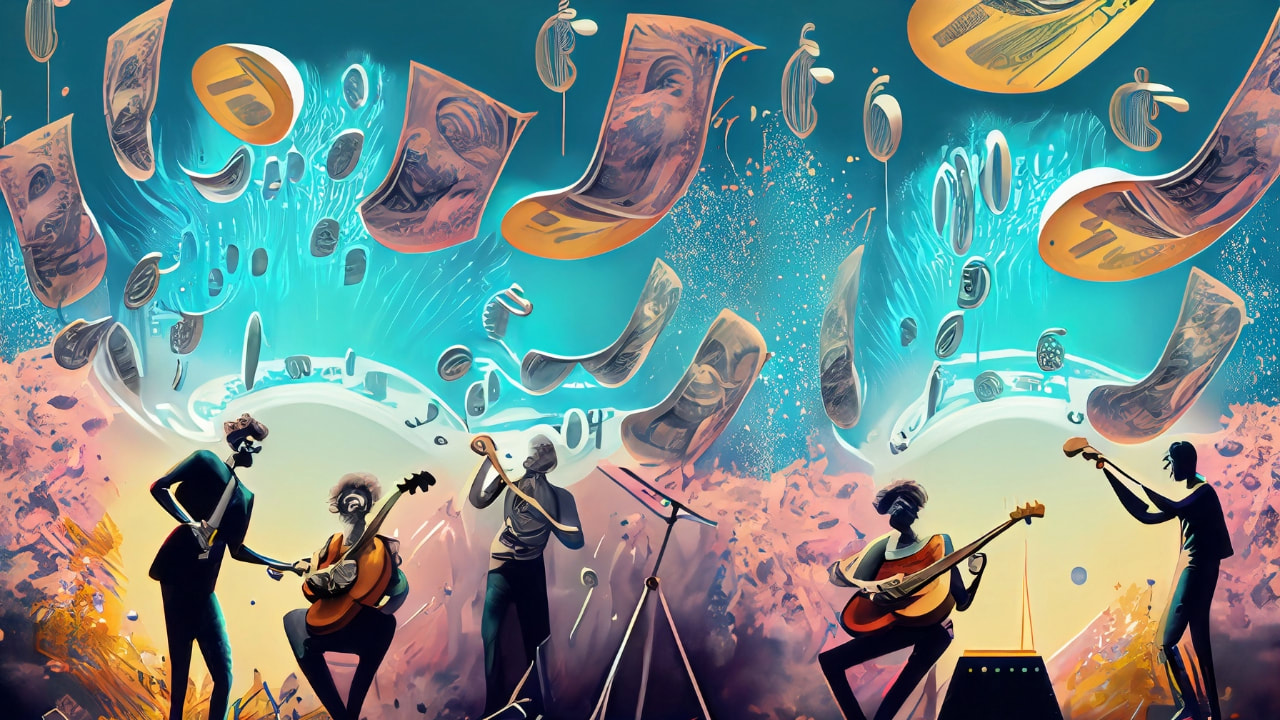


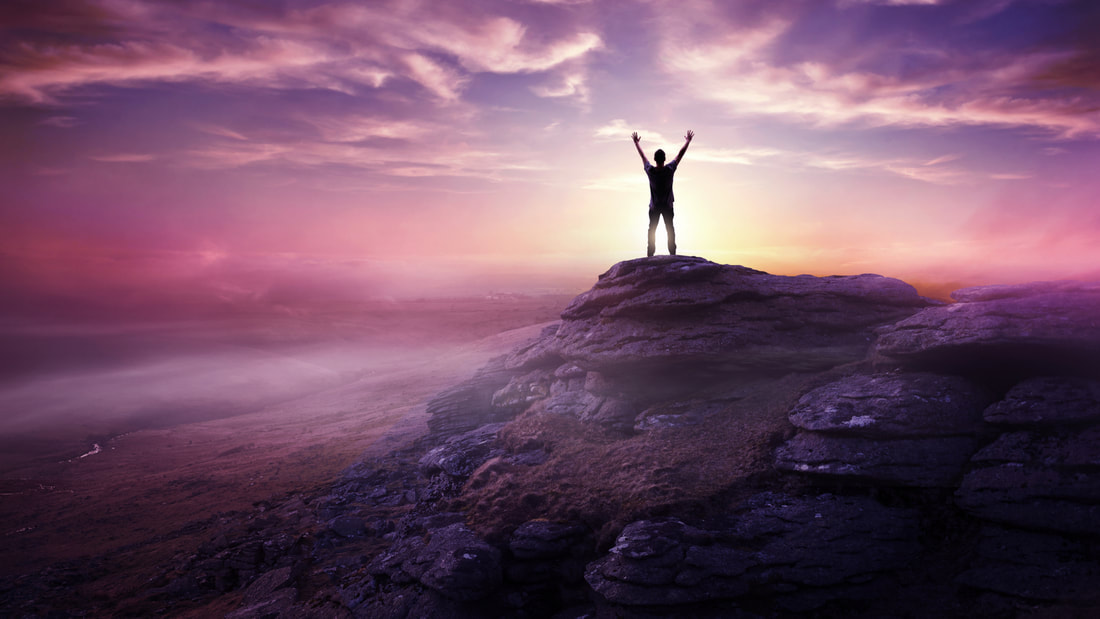
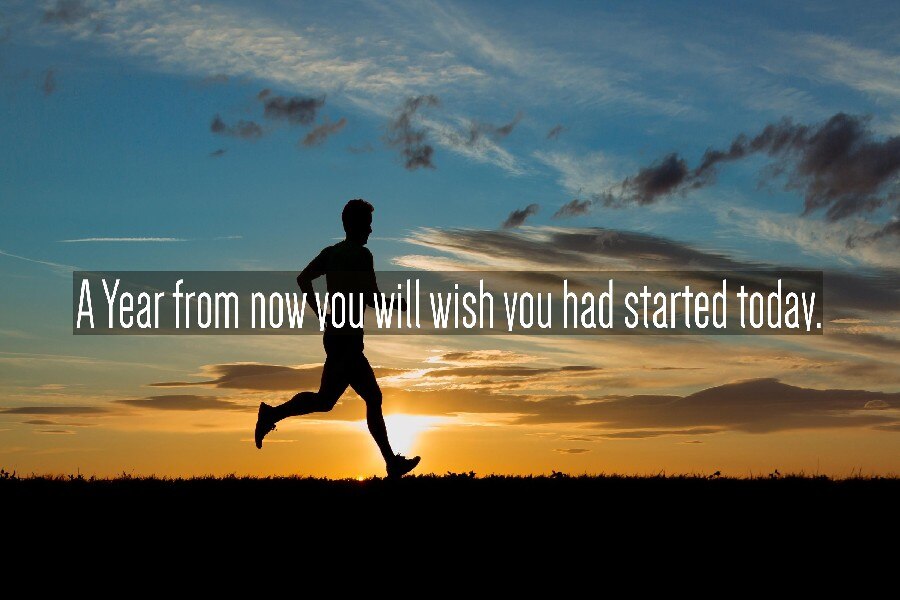
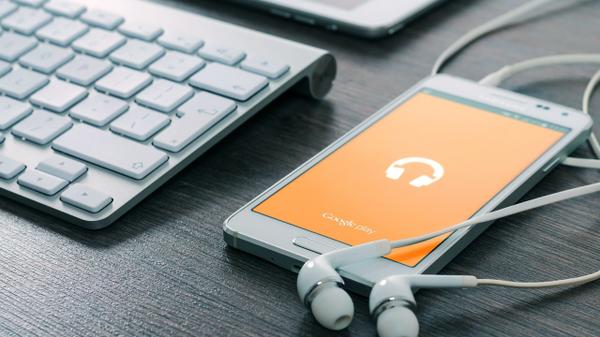

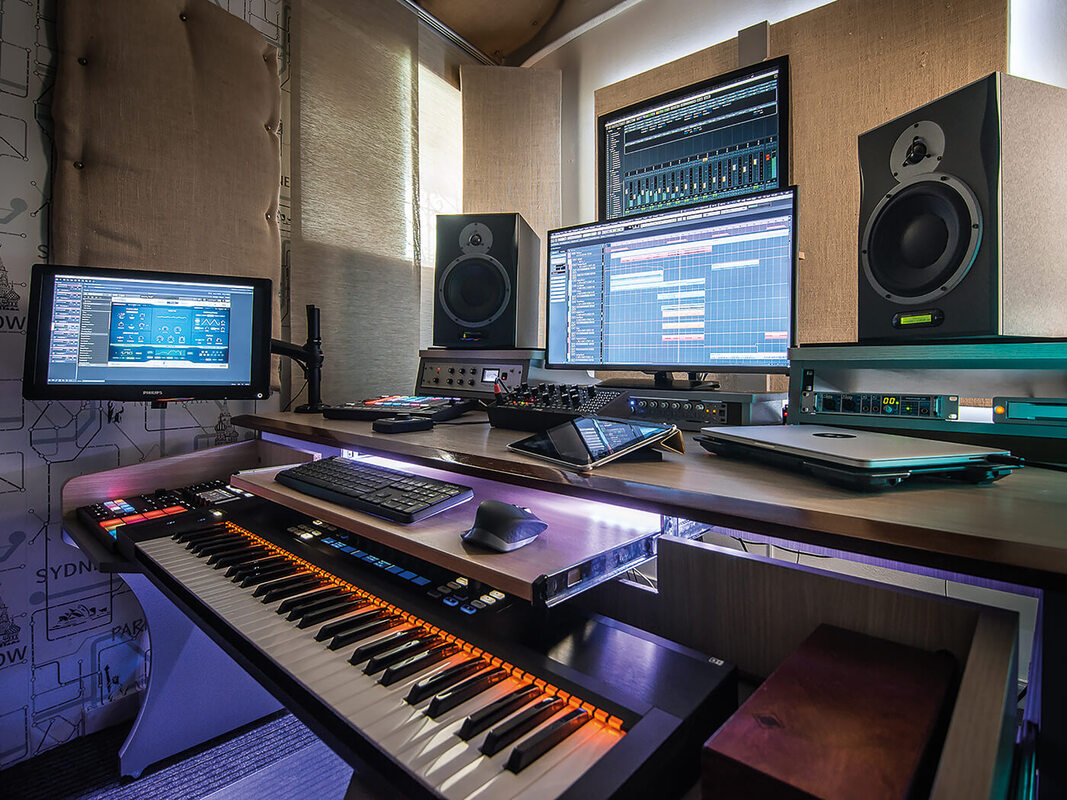
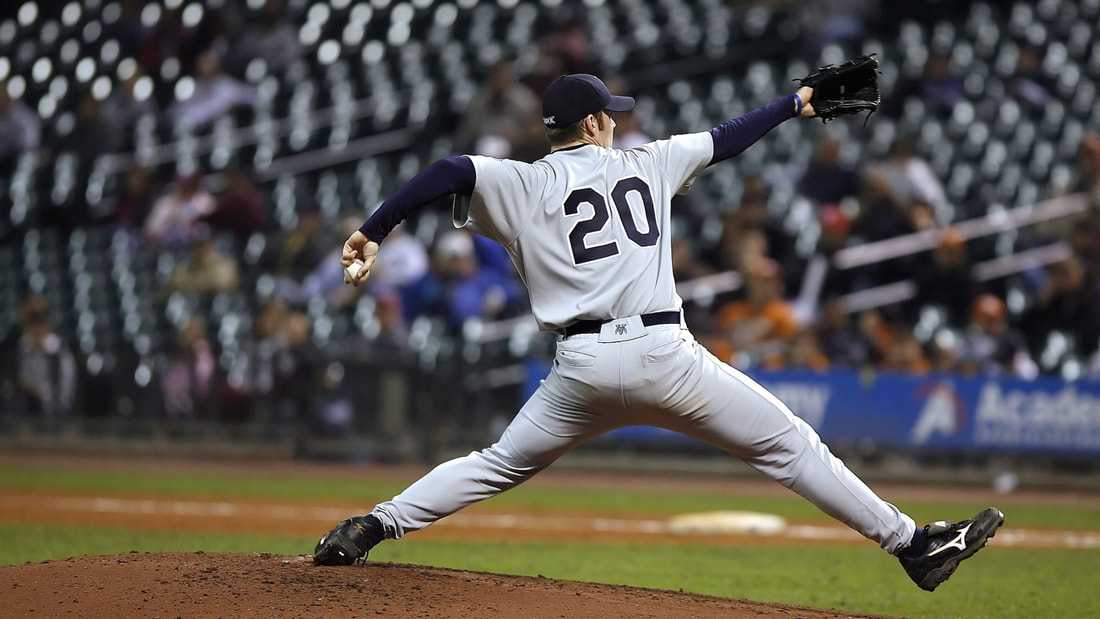
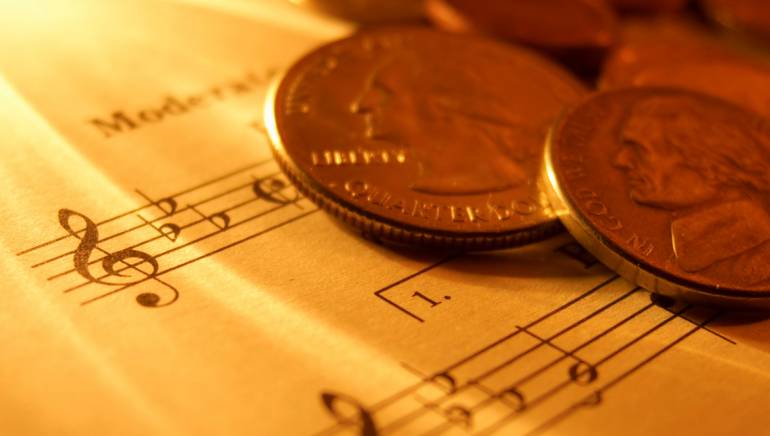
 RSS Feed
RSS Feed